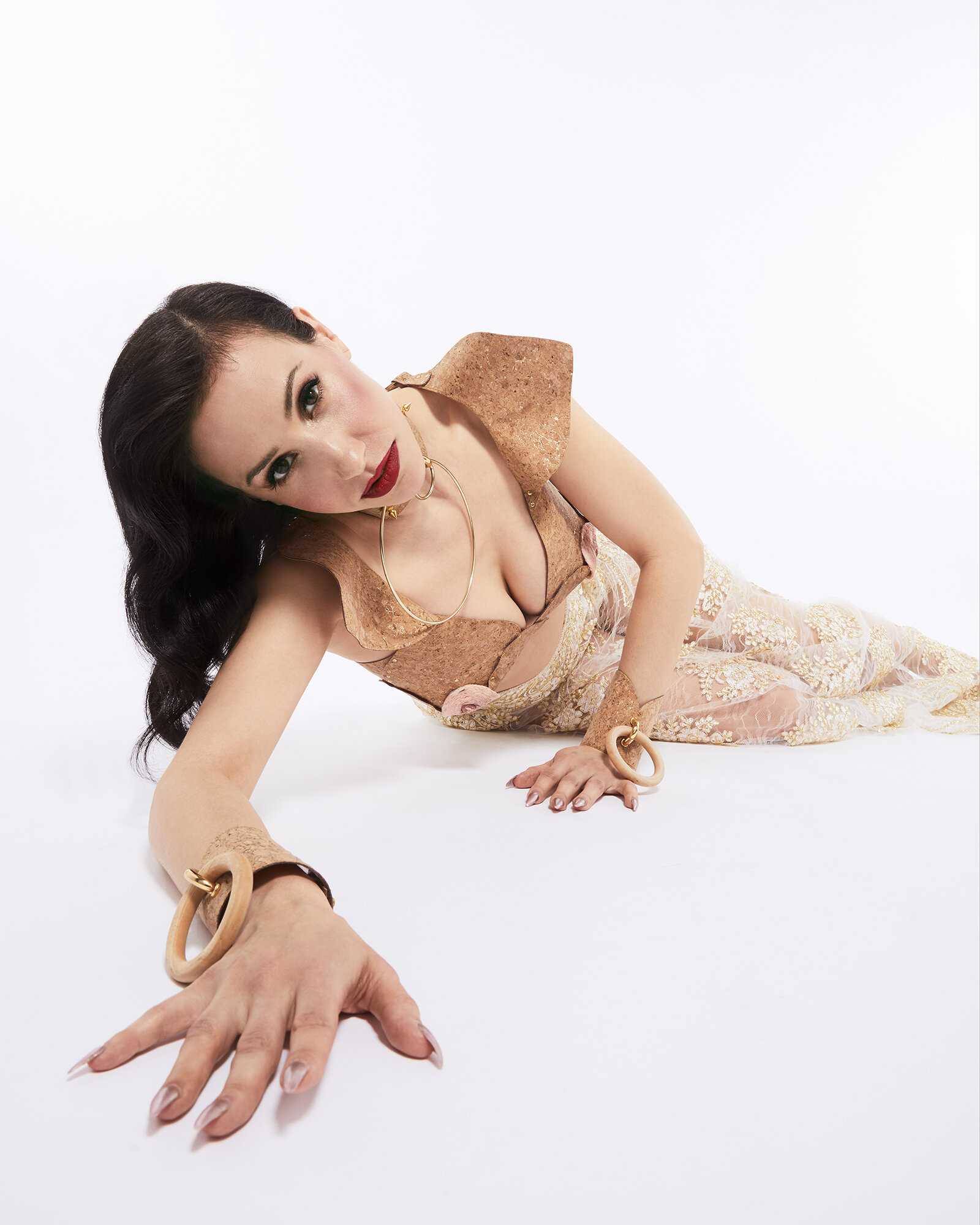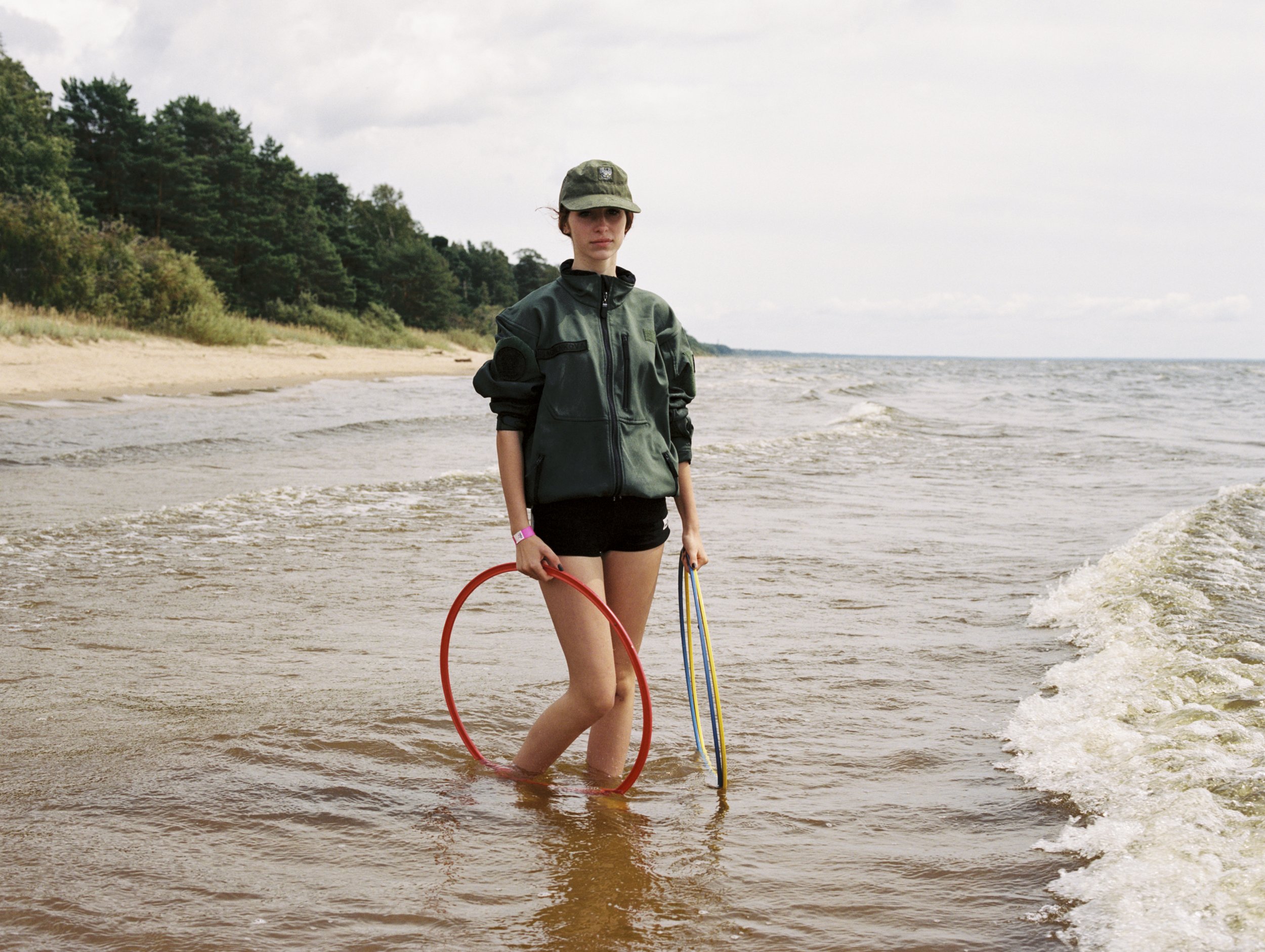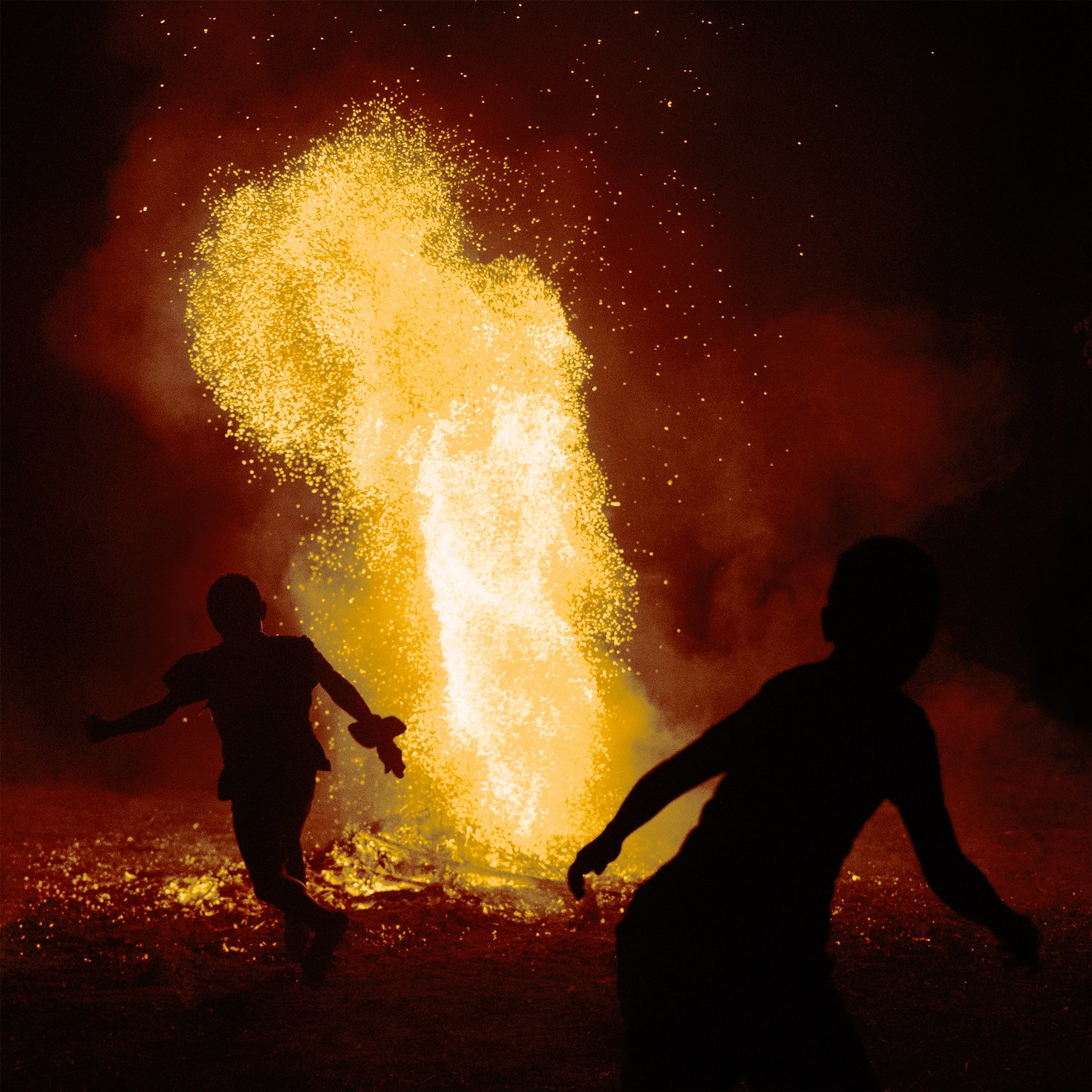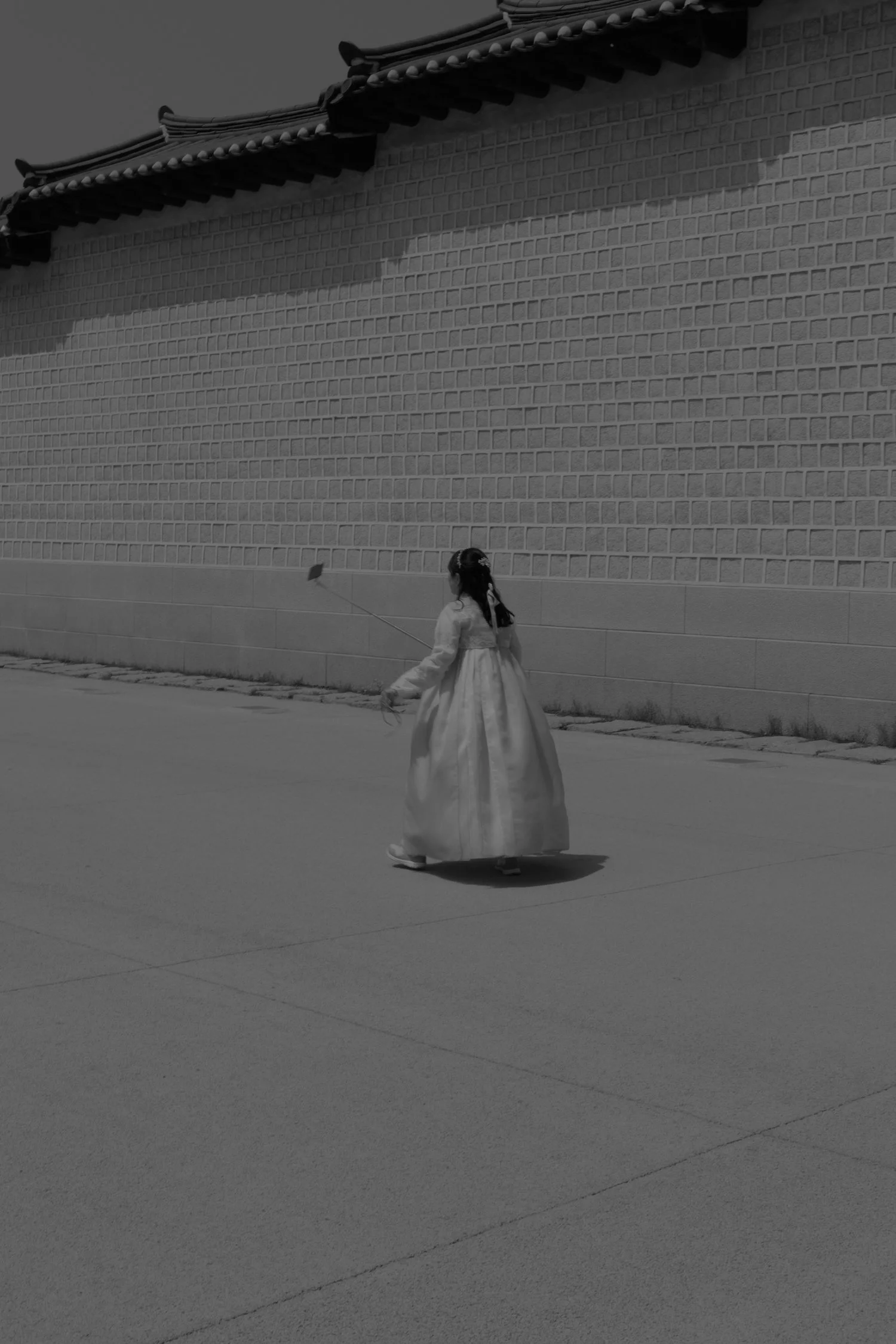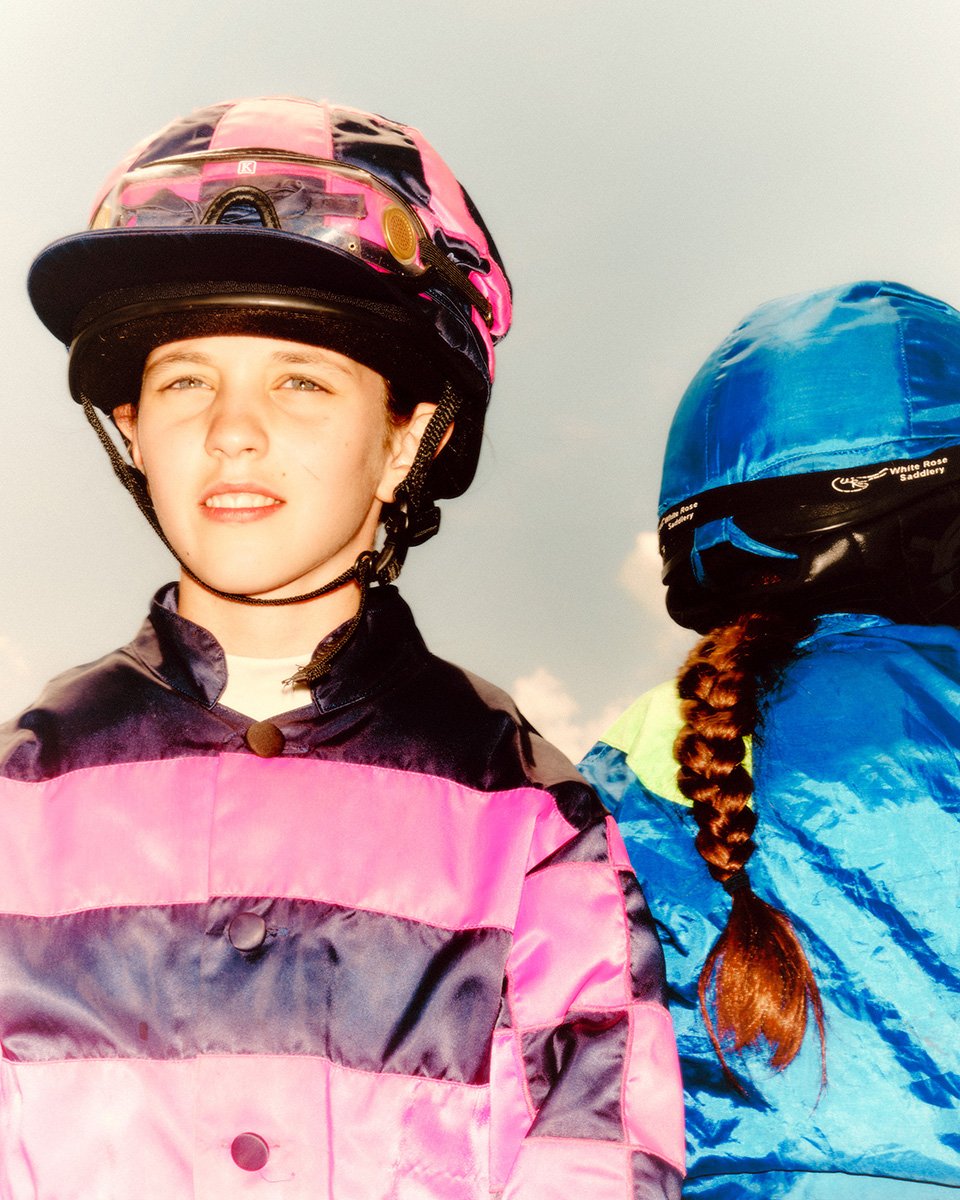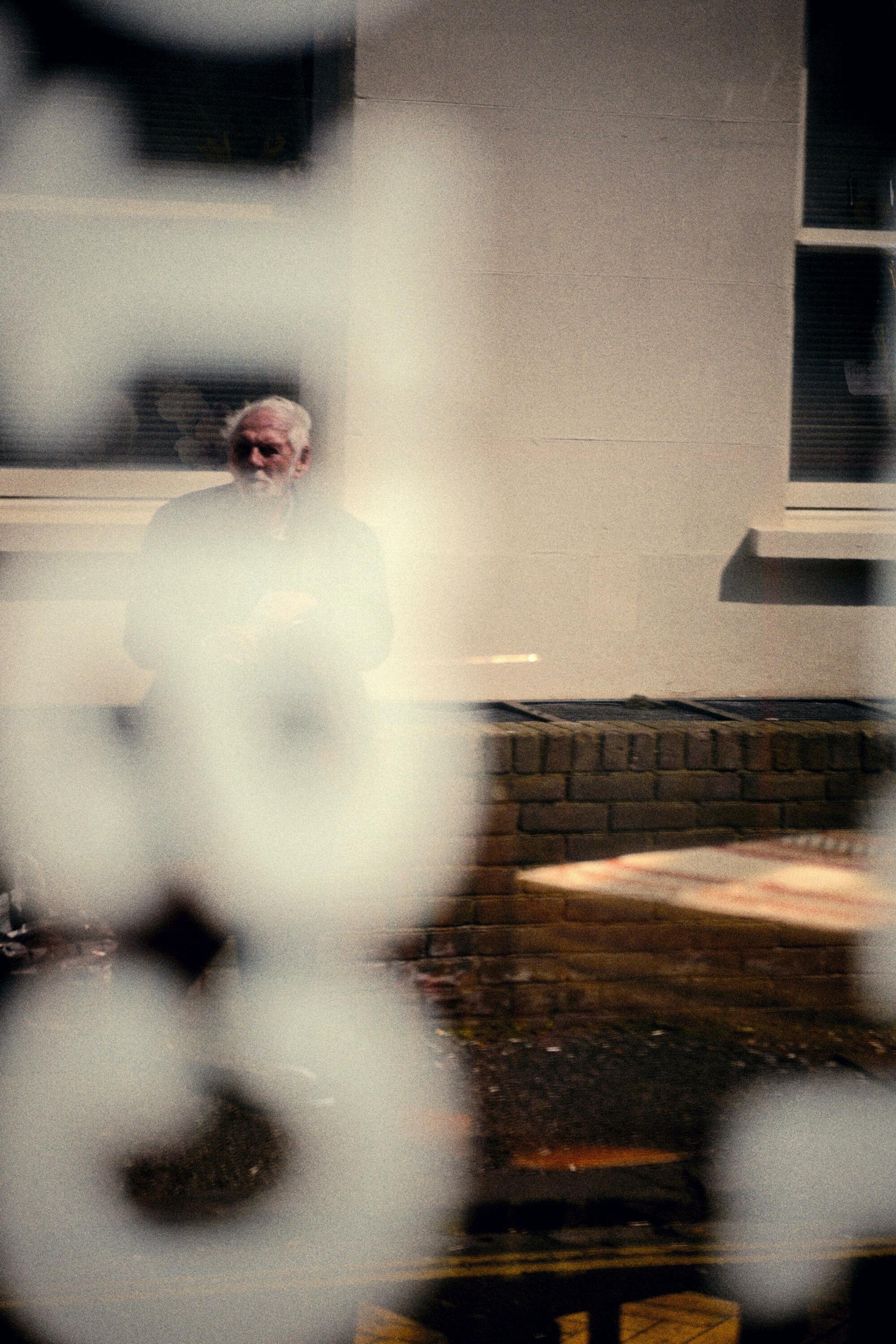Avant-Garde Kink
We caught up with the beautiful deity Ada Zanditon to find out more about her fashion fused with fetish couture line.
Interview Sufiyeh Hadian Photography JC Verona Hair Lewis Stanford Make up Elizabeth HsiehIn the words of Ada; ‘to wear Ada Zanditon Couture is to harness the power of your inner warrior deity.’ Creating fetish custom and ready-to-wear pieces through a queer, femme perspective, Ada uses gorgeous iridescent and rainbow coloured materials, embellished with heart cut-outs and crystals. It’s unlike anything you’ve ever seen before within the usual hetero-normative, male-gaze focused designs of BDSM (Bondage Discipline Sadism and Masochism) and fetish-wear (black or red latex? Groundbreaking). Ada promotes sex and body positivity as mutually exclusive.
How would you define your couture concept?
My couture concept is to create designs that are part of someone celebrating who they are and loving how they feel. I design and make many custom looks and accessories - the core products are harnesses; a harness is not only a functional garment but an ornate frame for the person wearing it, I want them to feel that they are the powerful art within the frame. I design with a Queer Femme body positive perspective on fetish / BDSM. My work has a strong unique aesthetic that balances on the cusp of fetish and fashion.
Success to me, is seeing someone’s face light up when they try on my designs and seeing their whole posture and expression become more confident and powerful, whoever they are. I make my pieces as adjustable as possible size-wise and can make any of my designs to order for all sizes. If it’s possible to make a piece fit from size 6 to 26, I love that. That is why my tagline is to ‘harness the power of your inner warrior deity’.
Who would be the ultimate Ada Zanditon deity?
Ideally, everyone who wants to wear my designs can wear them and feel that they are their ultimate deity. I think we are all divine energy having a human experience. I want to draw that thought process into kink… but to answer the question I am really grateful to have had some amazing opportunities to dress artists like Ariana Grande, Mariah Carey and Lil’ Kim. Other well-known deities who I would LOVE to dress are Lizzo (I love her so much!) City Girls, Cardi B and Symone from Ru Paul’s Drag Race Season 13.
“Success to me, is seeing someone’s face light up when they try on my designs and seeing their whole posture and expression become more confident and powerful, whoever they are.”
How has queer culture helped to define your aesthetic?
I have been immersed in Queer culture my whole life and I’m very grateful for my family being who they are; very open and progressive people who bought me Culture Club records when I was a small child – Boy George is obviously a huge inspiration. My mother, who herself is an artist and a poet, took me to see Lypsinka when I was 11 years old. I was totally awe struck by meeting her and have loved Drag ever since. It might not even sound that extraordinary anymore now we live in an era of Drag Race / Drag Con but this was in the early 1990’s when no one took their children to see Drag.
I love working with Drag artists such as Crayola The Queen, Virgin X, Cheddar Gorgeous and Crystal to name a few. My father Ralph was very creative and happened to be bisexual, his partner was an incredible trans Blues musician called Vicky Martin. I got to grow up going out in Soho and met my people at club nights like Kashpoint, Circus and Nag Nag Nag. I think all of this heavily influenced my design aesthetic, especially that drive to be opulent and drawn to ornate detailed complexity. This is why I want to re-imagine fetish through the femme gaze.
“I got to grow up going out in Soho and met my people at club nights like Kashpoint, Circus and Nag Nag Nag.”
How do you usually celebrate Pride?
When I was younger in the 2000’s, early 2010’s, Pride was a party, going out in Soho and moving onto a rave and it still is and should be a party, (when we can party again), but the narrative and global events have made us all much more engaged in the history, importance and meaning of Pride. We have gone from a time of gaining rights into an era where those hard-won rights are under threat or being rolled back. Pride has become much more a state of mind and expression to me where it is something that is part of my creative output all year round and I think that is true for many Queer creatives.
In 2020, Pride really was a protest as I marched with my friend Bishi at London Trans Pride which was a profoundly different and moving experience that marked a significant shift. I’m excited for HE.SHE.THEY Pride events returning as they have great DJ’s and incredible performers like my friend Stella Marbles. It’s important to be able to celebrate in every way.
Can you tell us more about your Pride collection?
I started making my pride chokers in 2019 as I wanted to visually bring more Queer identity into my work, and I really like the progress Pride flag that includes Black and Brown. I used the small hearts to create a rainbow necklace because it clearly says, ‘love is love’ and has a very universal appeal. They were very popular at Drag Con in January 2020 in London which I’m so grateful happened before the pandemic hit London!
When lockdown began, I was so grateful to have somewhere lovely and safe to live. It was clear how devastating it was to London’s homeless population - already the most vulnerable part of the community. I give monthly to a homeless charity already, but I wanted to do something especially to help LGBTQ+ people facing homelessness and I saw Munroe Bergdorf had linked to Stonewall Housing in her stories. I got in touch with them and their wonderful Fundraising and Initiatives Manager, Cat, got in touch straight away. They are so passionate and open, and I love their energy because you feel how much they care. So, £7 from each Pride choker goes to them and £9 from each cage Bra and T-style harness goes to them too.
The Choker was featured in the Pride issue of The Advocate, and I was very clear in encouraging people to give if they were able to, directly to Stonewall Housing. They have been doing incredible work since 1983 ensuring that LGBTQ+ people in London can live in homes free from fear and have access to advice and support on safe housing. This year, inspired by many of my Tik Tok followers and friends, (Queer Tik Tok is amazing by the way!) I started creating Lesbian, Transgender, Non-Binary, Bisexual and as many Queer identities (flag colours) as possible combinations of the hearts first on the collars and as harnesses and other accessories - which I hope will make even more people engaged and aware of Stonewall Housing to will amplify them and lead to more donations.
“Pride has become much more a state of mind and expression to me where it is something that is part of my creative output all year round and I think that is true for many Queer creatives.”
How did you get into fetish and BDSM wear?
I first got into fetish and BDSM when I was 21 and started meeting and dating kinky people. I realised I enjoyed that, but I thought of fetish and BDSM as something I did in my private life, separate from studying fashion and being a fashion designer. After I graduated from London College of Fashion, my graduate collection got a lot of attention from the fashion industry, and I launched a women’s ready to wear label through the Fashion Scout Ones to Watch Show with mentoring from the British Fashion Council. I then also did a men’s ready to wear label with my best friend Nik Thakkar – now the artist NEO 10Y.
Even after doing London Fashion Week for many seasons, selling in stores like Harrods, it always felt like it wasn’t really for me. It’s hard to stop doing something that everyone is telling you is successful, but I was so unhappy, I didn’t see how I could sustain it. So, in 2015 I decided to make the time and space to really experiment again and that’s when I started making my first modular harness designs inspired by the molecular structure of shark skin and other ornate organic forms. The more harnesses I made, the more I have worked to bring together both the design aesthetic with the functionality needed for BDSM. I don’t feel the need to compartmentalize my life anymore which leads to much greater personal happiness.
What do you most love about what you do now?
I love making a fantasy into a reality and the process or creative vision behind it. Creating a wearable object that someone is really blown away by, but most of all I love the process of making them by hand. I really enjoy the precision and detail involved in craft. It feels like a superhero power to be able to make something with my hands that brings someone else so much joy. It’s the best part of my job and gives me the energy to do all the less interesting things like packing orders, making content, doing taxes and all the mundane work that comes with running a small business.
Describe your ideal night out in London.
My ideal night out in London involves seeing Drag, Burlesque and Cabaret and then maybe going to a Queer and or fetish night club for some fun afterwards. I love Cookie Jar at Bethnal Green Working Men’s Club. I love Dalston Superstore – if I’m going to dance that’s where I want to go. I love Torture Garden and can’t wait for it to be back in full. I also can’t wait for Zara du Rose events to return and I’m really looking forward to going to the theatre. I can’t wait to see Deathdrop with Willam and Latrice Royale. So, my ideal night combines kink and camp, and perhaps vegan pizza if there’s time.
Where do you feel most at home?
In my creative space whether that in my studio, at home or by the ocean with my family stateside.
What would you say is the difference between the queer culture in London to LA?
In some ways, queer culture is becoming more homogenous because of the internet and being more globally connected but there is still a noticeable difference between them. Each of them are wild in different ways. London’s glamour tends to be grittier, whereas a night out in West Hollywood is a more high-octane affair.
There is a very diverse scene here in London but one that you can easily experience all of. In London you could go out to the Clapham Grand one night and then go off to The Glory the next night or even on the same day! Whereas in LA which is just as diverse but so much more spread out and reliant on car travel, you’d be more likely to frequent the same venues on a regular basis.




